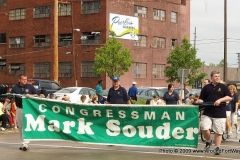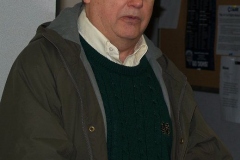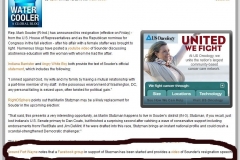Press release from Indiana Secretary of State, Todd Rokita:
Indiana Secretary of State Todd Rokita outlines procedures for filling vacant congressional seat and party nomination for the November ballot
Governor will call special election to fill vacant seat in U.S. House of Representatives; party caucus to select nominee for November election
(Indianapolis) – Indiana Secretary of State Todd Rokita outlined the following procedures today upon learning of the resignation of Congressman Mark Souder:
1) How long will the seat remain vacant?
Under Indiana Code 3-10-8-1(3), the seat will remain vacant until a special election is held. The winner of the election must then take the oath of office and be seated by the U.S. House of Representatives.
Unlike the U.S. Senate where vacancies are filled by gubernatorial appointment, there is no appointment to fill a vacancy in the U.S. House. Under Article 1, Section 2 of the U.S. Constitution, vacancies in the U.S. House must be filled by special election.
2) When will the special election be held?
A resignation must be submitted to the Speaker of the U.S. House of Representatives. Typically, a resignation will indicate its effective date.
After the Governor is notified of the resignation, the Governor will then issue a writ of election that must specify the date of the special election (IC 3-10-8-3). There is no deadline specified by statute for the Governor’s writ to be issued.
However, the combination of deadlines set by state law for nominating candidates and absentee ballot voting makes it mathematically impossible for a special election to occur earlier than 60 days after a vacancy occurs in the office of U.S. Representative (See, for example, IC 3-13-1-7; 3-13-1-9; 3-13-1-20; 3-8-6-13; 3-8-7-15).
3) How will the major parties select candidates for the special election to fill the vacant seat in Congress?
Major political parties, i.e. Republicans and Democrats, will select candidates to be on the special election ballot by caucus. Within 30 days of the vacancy, the state party chairmen must call their caucuses, composed of precinct committeemen within the congressional district, who will nominate and elect their party’s candidate (IC 3-13-1-7(a)(2)).
A person who wants to become a candidate must file a declaration of candidacy with the chairman of their party’s caucus, in this case, state party chairs, and the Secretary of State or Indiana Election Division.
4) What about candidates who are not affiliated with a major political party?
These candidates could include a Libertarian Party candidate, who would be entitled to be placed on the special election ballot without petitioning. The Libertarian Party must give 10 days’ notice of its intent to nominate a candidate (IC 3-13-1-20), and file the certification of its nominee no later than noon, 50 days before the election (IC 3-8-7-15).
These candidates could also include independent candidates or candidates of other minor party candidates, who gain access to the special election ballot by gathering petition signatures.
The total number of signatures needed by petition candidates would be equal to two percent of the total votes cast for all four secretary of state candidates in the most recent general election (in November 2006). A petition of nomination must be filed with the Indiana Election Division no later than noon 50 days before the date of the election (IC 3-8-6-13).
5) Who is responsible for holding the special election?
Once candidates are nominated and certified to the Indiana Election Division, each county within the district is responsible for holding the special election.
Ballots have to be printed, absentee voting must be available, and poll workers have to be recruited and appointed. Voter registration closes 29 days before the special election is held (IC 3-10-8-9).
6) Who pays for the costs associated with holding a special election?
Any costs involved with the special election are paid for by the county in accordance with normal election procedures (IC 3-5-3-1).
7) How long will the individual who is elected during the special election serve?
The individual elected in the special election would serve the remainder of the term which will end noon, January 3, 2011 (20th Amendment to the US Constitution).
8) What about the November 2010 general election?
This special election for the remainder of the current term (2010-2011) will not affect the election later this year for the 2011-2013 term. A candidate nominated at the May 4, 2010 primary may choose to withdrawal from the General Election ballot by filing a statement to that effect on the prescribed form with the Election Division no later than noon, July 15, 2010.
The resulting candidate vacancy for the General Election ballot will be filled by a caucus of precinct committeemen whose precincts are within the congressional district. The party must fill the vacancy within 30 days after the withdrawal occurs.
Any individual who was defeated in the May 4, 2010 Republican primary would be allowed to file as a candidate at both the special election and to fill the ballot vacancy for the full two year term.
9) When was the last time a special election was held in Indiana?
The last time a special election for Congress was held in Indiana was on March 11, 2008, when U.S. Representative Andre Carson was elected in the 7th Congressional District for the seat vacated by Julia Carson, who passed away earlier in the year.
10) Where can I obtain additional information about special elections?
Additional information about the special election can be obtained by visiting www.in.gov/sos/elections/ or by calling the Indiana Election Division at 317-232-3939.








